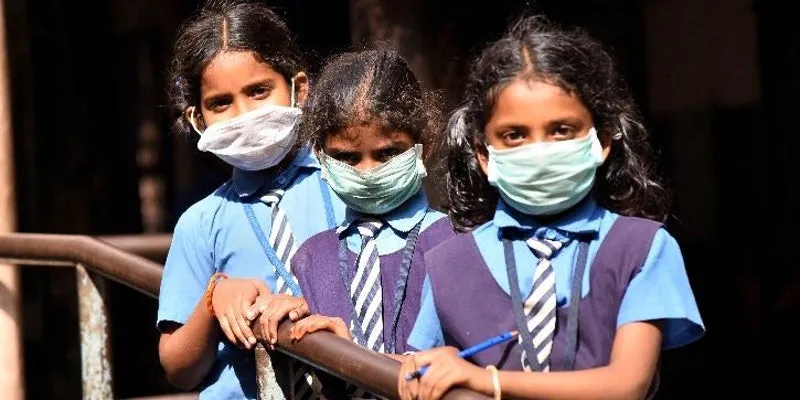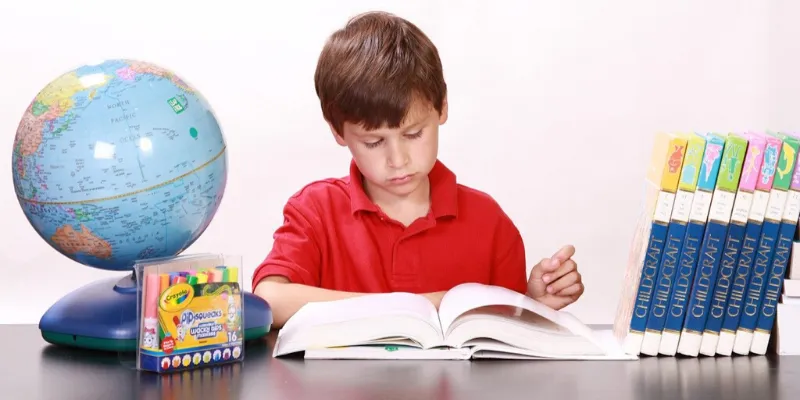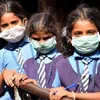Here’s how you can keep children engaged during the coronavirus outbreak
With coronavirus shutting down schools and outdoor activities, what can parents do? E-learning platforms, books, comics, and board games can keep children engaged, happy, and healthy.
For the last few days, Bengaluru-based techie Meenakshi SKM, 31, has been working from home and also taking care of her little daughter. She realised that the family was in for a big change with her five-year-old scheduled to be at home from the second week of March.
“Parenting and working from home at the same time isn’t easy. My day starts at 5 am and ends at around 11 pm. So, I am on the constant lookout for ideas to keep her busy and productive,” Meenakshi says.

Meenakshi and her five-year-old daughter, Saanvi, read a book together.
Meenakshi, like many other parents, relies on "drawing, art and craft, storytelling, card games, and reading". “But I feel it’s important to find creative ways to support children during this uncertain and disruptive time,” she says.
Last week, UNESCO said the coronavirus outbreak had led almost 22 countries across three continents to close schools, affecting over 290 million students.
Governments across the world concur that the fewer children making the journey to school, the lower the risk that COVID-19 can spread.

Many schools across India have been shut down due to the COVED-19 pandemic.
With the Indian government declaring a lockdown on schools across India, several families are scrambling to find ways to keep the children engaged and happy.
The clear guidance on self-isolation and social distancing means that outdoor activities – the mainstay of children’s evenings – are a strict no-no. This includes park playtime, museum visits, shopping expeditions, and classes for sports, art, and crafts.
But, amid the gloom and doom, plentiful opportunities have emerged to not only boost children’s learning, but help them have fun. These include e-learning platforms, websites, and books; many of them are offering free subscriptions and discounts to drive engagement during the pandemic.
SocialStory brings to you a slew of ways you can keep your kids excited and engaged during this disruptive time:
E-learning platforms

Digital learning platforms will ensure that learning doesn’t stop. All you need is a high speed internet connection and a laptop/tablet. Several edtech startups, including , , , , Educational Initiatives, , and , are at present offering free online courses.
Unlike conventional modes of in-person teaching, e-learning tools do not require a lot of handholding. Most platforms have a tracker to monitor progress, and children can read and immerse themselves in a variety of subjects, from science, mathematics, and social studies to music and art.
Khan Academy is offering a range of educational games and instructional videos. The platform develops lessons in partnership with revered institutions such as NASA, The Museum of Modern Art, and The California Academy of Sciences.
can help kids learn coding to build mock apps and websites. Outschool lets children gain knowledge on a range of topics by attending live classes. Scholastic has created a free learn-from-home website with activities and educational modules for over 20 days. Other online resources to explore are BrainPop, Curiosity Stream, , etc.
Books and magazines

In the present digital era, it is important to ensure children unplug from technology and spend time with books. Not only does it help develop learning capabilities, but also speech development and social interaction.
You can spend a few minutes together reading poetry, fantasy, or folklore with your children, whenever you take a break from work.
Apart from “real” books, you can also tap vast networks online. The flagship brand Amar Chitra Katha, which also publishes Tinkle and is known for characters like Suppandi, Shikari Shambu, and Tantri the Mantri, is offering their entire catalogue free of cost till 31 March this year to help children maintain social distancing. Many other sites, including Amazon and Pratham, offering free e-books.
Books that involve drawing, art, and puzzles are also effective in holding attention and interest.
Do more with YouTube

Not so long back, the only source of screen time for children was television. But now, the internet brings them numerous YouTube channels with interactive visuals and content. However, amid all the noise, it can be a little challenging to identify quality channels.
The Brain Scoop, which focuses on museums, adventures, and history, is one of the most popular. Hosted by Emily Graslie, the Chief Curiosity Correspondent, each episode takes children through science and art events.
Crash Course is another channel that has managed to garner over a billion views in the last 13 years. Managed by John Green and his brother Hank Green, it covers general introductions and explanations on concepts in history, psychology, science and ethics.
National Geographic Kids uploads wonderful videos of animal interactions, fun science experiments, and kid-friendly travel locations. They have even created playlists depending on the interest areas of kids, so that they can binge-watch series. Channels such as SoulPancake, Science Max, Free School, and Geeek Gurl Diaries are also interesting.
Fun and games

With schools placing a lot of emphasis on curriculum and academics, creativity and logical thinking is often pushed to the bottom of the barrel for children. Board and puzzle-based games can keep their brain cells active.
Apart from family favourites like Monopoly, Life, Deal, Uno, Cluedo, and others, there are new games that can help engage children.
In Rush Hour, kids need to maneuver through traffic jams to get their favourite ice cream. Connect the Dots makes it imperative for children to put on their thinking caps. Other pastimes to consider include memory games, jigsaw puzzles, chess, and tangrams.
DIY pursuits, be it craft or science-based, can keep children and parents occupied for hours. So, don’t lose heart that you’re stuck at home. There’s so much you can do!
(Edited by Teja Lele Desai)








